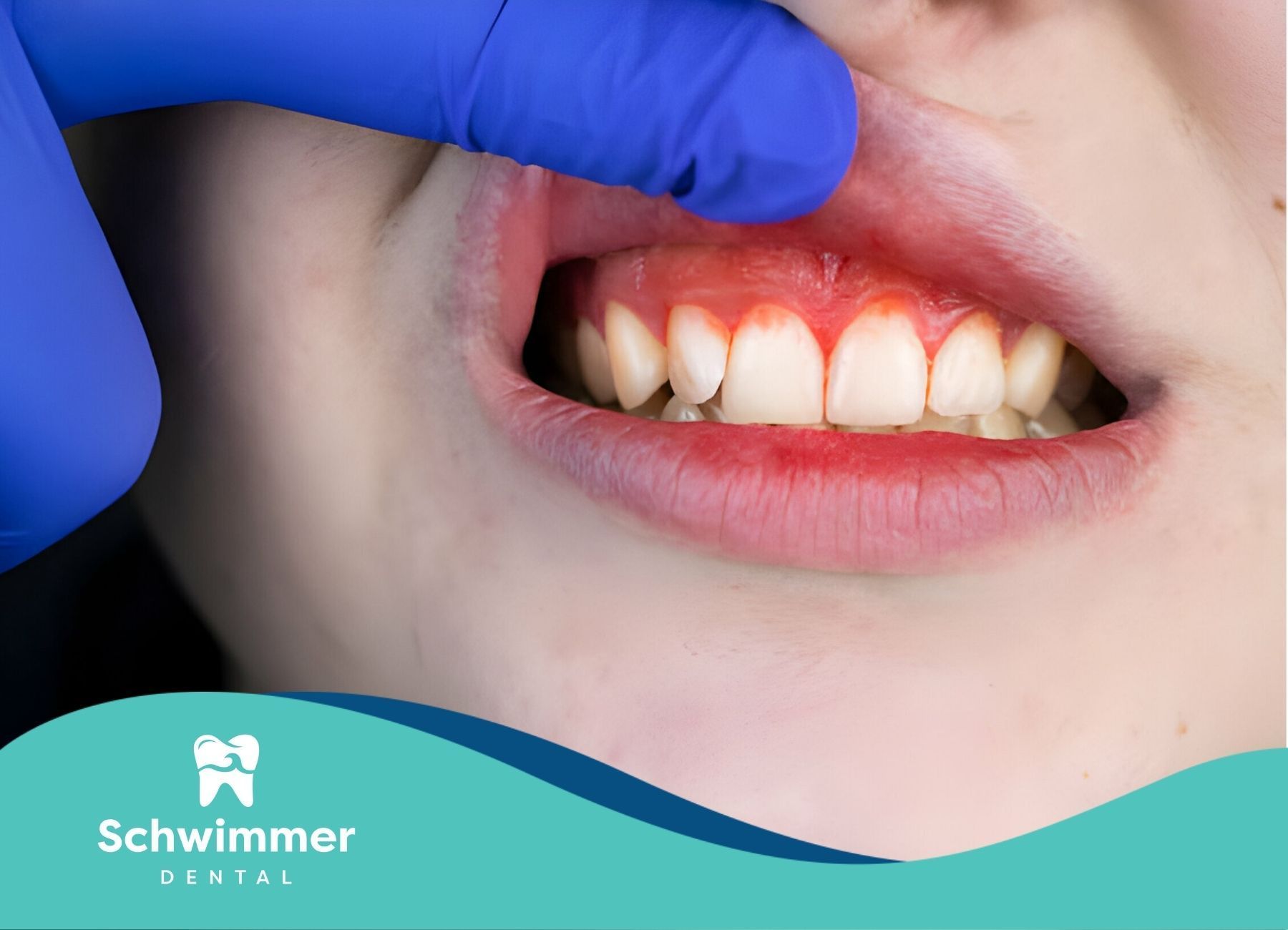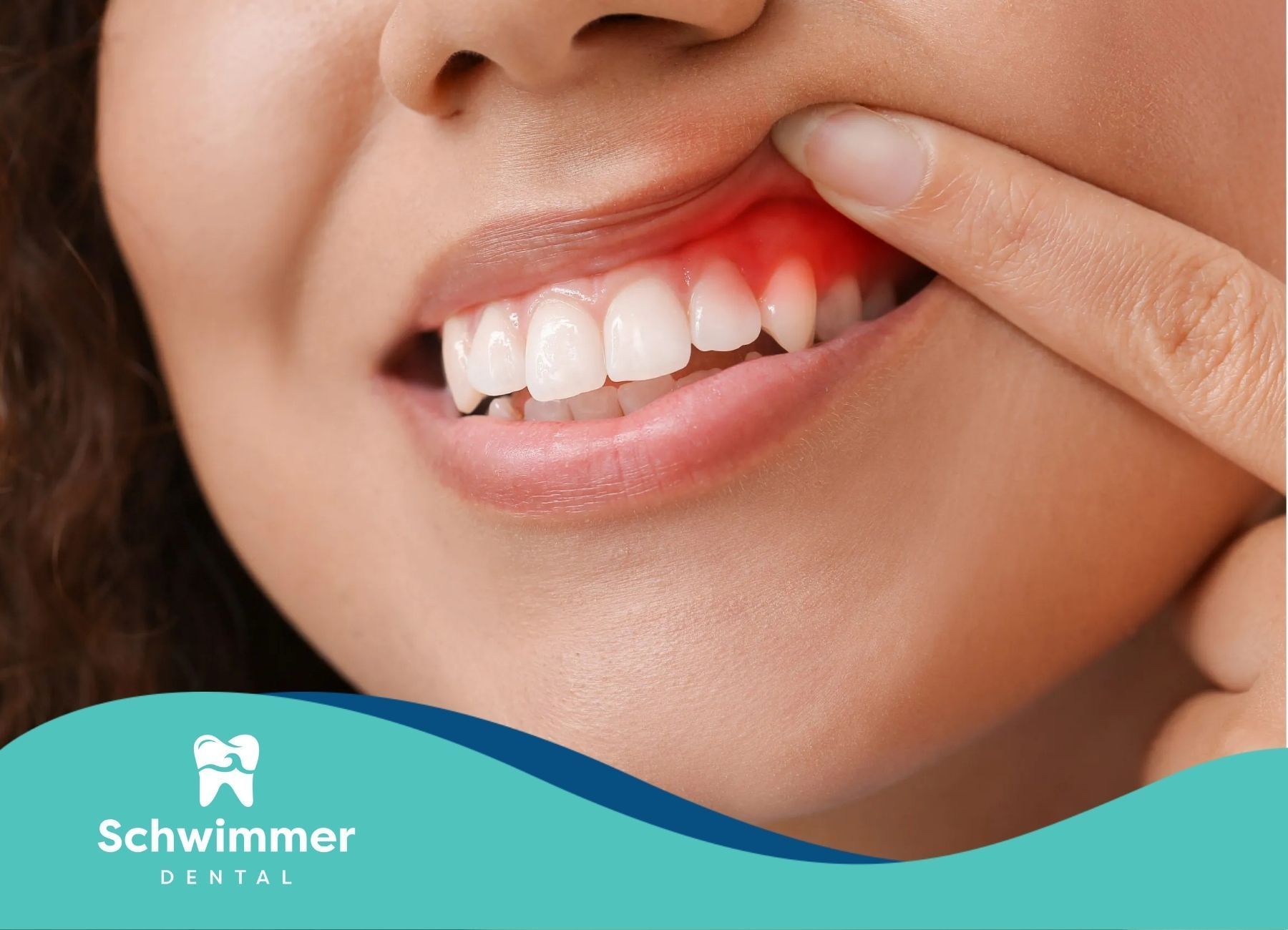What Happens During a Root Canal? An Inside Look at the Process
Key Highlights
- A root canal is a dental procedure to save a severely infected or damaged tooth from extraction.
- The treatment involves removing the infected or dead pulp tissue from inside the tooth.
- Signs you may need a root canal include lingering pain, sensitivity to temperature, and gum swelling.
- The procedure involves cleaning and shaping the root canals before sealing them with a filling material.
- After the procedure, a dental crown is placed to protect and restore the tooth's full function.
Hearing the words “root canal” might bring to mind outdated notions of pain and discomfort, but today’s root canal procedures are safe, effective, and virtually pain-free. If you’re struggling with
tooth pain, swelling, or sensitivity, a root canal could be the solution to preserving your natural tooth.
In this article, we’ll explore everything you need to know about root canal—from identifying the signs to understanding the process and aftercare.
Understanding Root Canal Procedure
Root canal is a procedure designed to save a tooth that is severely decayed or infected. When the pulp, the soft tissue inside the root canal, becomes infected or inflamed, it causes significant pain and can lead to more severe dental problems if left untreated. Contrary to popular belief, root canals are not inherently painful. In fact, they are designed to relieve pain caused by the infection.
The treatment focuses on removing the infected or dead pulp, cleaning the inside of the tooth (including the root canals), and then sealing it to prevent further infection. Root canal treatment is a highly effective way to preserve your natural teeth and avoid extraction.
The Basics of a Root Canal
Root canal treatment targets the innermost part of your tooth. When decay or damage reaches the pulp, which contains blood vessels and nerves, bacteria can enter and cause infection. This infection leads to pain, inflammation, and potential abscesses.
During a root canal, the dentist carefully accesses the inside of the tooth, removes the infected pulp, and meticulously cleans the hollow space within the tooth's root canal system. This space is then disinfected and filled with a biocompatible material to seal it, preventing further infection.
Signs You Might Need a Root Canal
Recognizing the signs of a potential root canal infection is crucial for seeking timely treatment. While some individuals may experience no symptoms initially, be watchful for the following indicators:
First and foremost, persistent pain in a particular tooth, especially when biting or chewing, can be a telltale sign. Prolonged sensitivity to hot or cold temperatures in your food and drinks could also point to an issue with the tooth's pulp.
Furthermore, visible discoloration or darkening of the tooth might indicate damage to the inner layers. If you notice any swelling or tenderness in the gums around a specific tooth, it's essential to consult a dentist to determine the cause.
The Step-by-Step Process of a Root Canal Procedure
A root canal is a multi-step process that ensures the complete removal of infected material and proper restoration of the tooth. The process typically involves two or more appointments, depending on the severity of the infection and the complexity of the tooth's anatomy.
Each step is crucial in ensuring the long-term success of the treatment and preserving the natural tooth.
Preparing for Your Procedure
Your root canal journey will start with a consultation at the dental office. During this appointment, the dentist will examine your tooth, often taking X-rays to visualize the extent of the infection and the structure of the roots. This helps them plan the procedure accordingly.
Before the procedure begins, the dentist will numb the affected tooth and the surrounding area using local anesthesia. This ensures a comfortable experience during the treatment, as you won't feel any pain or discomfort. Once the anesthesia takes effect, the dentist will proceed with the next steps of the root canal procedure.
The Cleaning and Shaping Phase
With the area numb, the dentist will use a dental dam – a thin sheet of rubber – to isolate the tooth, keeping it dry and free from saliva. This ensures a sterile environment for the procedure. They will then create a small access opening on the top of the tooth to reach the pulp chamber.
Here's a breakdown of what happens next:
- Tiny instruments, called files, are used to clean out the infected pulp from the pulp chamber and root canals.
- The canals are then carefully shaped to create a smooth pathway for the filling material.
- Throughout the procedure, the dentist will use an antimicrobial solution to irrigate the canals, removing debris and bacteria.
Filling the Canal
After meticulously cleaning and shaping the canals, your dentist will use a biocompatible material called gutta-percha to fill the root canals. Gutta-percha is a rubber-like material that is inserted into the canals in a softened state. Once it cools and hardens, it effectively seals the canals, preventing any further infection from reaching the root of the tooth.
In some cases, a temporary filling is placed on top of the gutta-percha to seal the access opening until a permanent restoration, such as a dental crown, can be placed.
Aftercare and Recovery
Generally, root canal procedures are associated with minimal discomfort and a short recovery period. Most patients can resume their normal activities within a day or two. However, it's crucial to follow your dentist's instructions for aftercare to ensure optimal healing and long-term success of the treatment.
Gentle oral hygiene practices and a healthy diet can significantly contribute to a comfortable recovery.
Immediate Care Post-Procedure
Right after your root canal procedure, the treated tooth may feel tender or slightly sensitive for a few days. This is completely normal and should subside as the area heals. The dentist may recommend over-the-counter pain relievers, like ibuprofen, or prescribe stronger medication if needed.
Until you have your permanent dental crown placed, it's important to avoid chewing on the treated tooth. Chewing on the tooth could cause it to fracture, requiring more extensive treatment. Stick to soft foods and try to chew on the opposite side of your mouth to give the treated tooth time to heal.
Long-Term Care for Your Tooth
Once your root canal procedure is complete and a dental crown has been placed, caring for your treated tooth is similar to caring for your other natural teeth. Maintain a consistent oral hygiene routine, brushing your teeth twice a day with fluoride toothpaste and flossing at least once a day.
Continue to schedule regular dental checkups and cleanings, typically every six months, or as advised by your dentist. These visits allow the dentist to monitor the treated tooth, ensure the dental crown is in good condition, and address any potential issues early on.
Comparing Root Canal and Tooth Extraction
When faced with a severely infected or damaged tooth, the choice often boils down to root canal treatment or tooth extraction. In most cases, saving your natural tooth with root canal treatment is the preferred option.
Root canals eliminate the infection while preserving your natural tooth structure. This helps maintain your bite's alignment, prevents surrounding teeth from shifting, and helps you avoid the potential complications and costs associated with tooth replacement options. However, in certain situations, such as extensive tooth damage or inadequate bone structure for supporting a crown, tooth extraction might be the more suitable solution.
Benefits of Choosing a Root Canal
Root canal treatment offers numerous advantages over tooth extraction, making it a valuable procedure in dentistry. By choosing a root canal, you can often save your natural tooth, which plays a crucial role in maintaining proper chewing function and jawbone stimulation. A root canal successfully eliminates the infection, relieving pain and preventing the need for more extensive dental work.
When Extraction Might Be the Better Choice
While saving a natural tooth is generally the goal, there are instances where tooth extraction might be the more practical option. If the infected tooth is severely fractured or broken down beyond repair, a root canal might not be feasible. In cases where the tooth's structure is too weak to support a dental crown, even after a root canal, extraction might be necessary.
Additionally, if there is significant bone loss in the jawbone due to advanced gum disease, the tooth might not have sufficient support, making extraction a more suitable approach.
Conclusion
Root canal treatment is a common dental procedure that can save a severely damaged tooth. Understanding the process and aftercare is crucial for a successful outcome. By opting for a root canal over extraction, you preserve your natural smile and maintain proper oral function. Recovery time varies, but following the dentist's instructions diligently ensures a smooth healing process.
At Schwimmer Dental, we specialize in providing expert care in a calm, patient-centered environment. Our experienced team is here to guide you through every step of the process, ensuring your comfort and peace of mind. If you’re experiencing any symptoms or have concerns about your dental health, don’t wait—schedule a consultation with Schwimmer Dental today. Let’s work together to restore your smile and keep it healthy for years to come!
FAQs
What are the common signs that I might need a root canal?
Persistent tooth pain, sensitivity to hot or cold, and gum swelling are common signs you might need a root canal.
Is a root canal procedure painful?
Modern root canals are performed with anesthesia, making the procedure virtually painless. Most patients feel relief afterward.
How long does it take to recover from a root canal?
Recovery is typically quick, with most discomfort subsiding within a few days. Following aftercare instructions ensures a smooth recovery.



